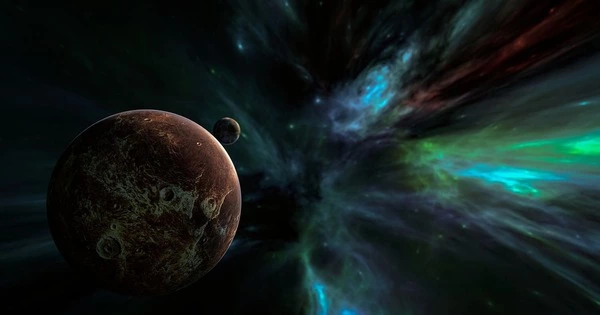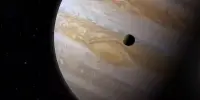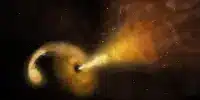The planets in our solar system all revolve around the Sun. Exoplanets are planets that orbit stars other than our own. Exoplanets are extremely difficult to see with telescopes. They are obscured by the bright glare of the stars around them. As a result, astronomers employ alternate methods to detect and study these distant planets. They look for exoplanets by observing how these planets affect the stars they orbit.
The first exoplanets were discovered around a rapidly rotating star known as a pulsar 30 years ago. Astronomers have discovered that these planets could be extremely rare. Iuliana Niţu, a PhD student at the University of Manchester, will present the new research at the National Astronomy Meeting (NAM 2022).
It is currently unknown what processes cause planets to form and survive around pulsars. A survey of 800 pulsars conducted by the Jodrell Bank Observatory over the last 50 years revealed that this first discovered exoplanet system is extremely rare: less than 0.5 percent of all known pulsars could host Earth-mass planets.
Pulsars are incredibly interesting and exotic objects. The first extra-solar planets were discovered around a pulsar exactly 30 years ago, but we still don’t know how these planets can form and survive in such harsh conditions. Finding out how common these are, and what they look like is a crucial step towards this.
Iuliana Niţu
Pulsars are a type of neutron star, the densest stars in the universe, formed at the end of a typical star’s life by powerful explosions. They are extremely stable, rotate quickly, and have extremely strong magnetic fields. Pulsars produce bright radio emission beams from their magnetic poles, which appear to pulse as the star rotates.
“[Pulsars] produce signals which sweep the Earth every time they rotate, similarly to a cosmic lighthouse,” says Nițu “These signals can then be picked up by radio telescopes and turned into a lot of amazing science.”
The first exoplanets were discovered in 1992, orbiting a pulsar known as PSR B1257+12. The planetary system is now known to contain at least three planets with masses comparable to those of our Solar System’s rocky planets. Since then, a few pulsars have been discovered to be planet-hosting objects. However, the extremely violent conditions surrounding pulsar births and lives make ‘normal’ planet formation unlikely, and many of the detected planets are exotic objects (such as planets made mostly of diamond) unlike those found in our Solar System.

NASA launched the Kepler spacecraft in 2009 to search for exoplanets. Kepler searched for planets of various sizes and orbits. And these planets orbited stars of varying size and temperature. Some of the planets discovered by Kepler are rocky planets located at an unusually close distance to their star. This sweet spot is known as the habitable zone, and it is where life may be possible.
Kepler discovered exoplanets using a technique known as the transit method. A transit occurs when a planet passes in front of its star. As the planet passes in front of the star, it blocks some of the star’s light. That means a star will look a little less bright when the planet passes in front of it.
A team of astronomers at the University of Manchester performed the largest search for planets orbiting pulsars to date. In particular, the team looked for signals that indicate the presence of planetary companions with masses up to 100 times that of the Earth, and orbital time periods between 20 days and 17 years. Of the 10 potential detections, the most promising is the system PSR J2007+3120 with the possibility of hosting at least two planets, with masses a few times bigger than the Earth, and orbital periods of 1.9 and ~3.6 years.
The findings show that there is no bias for specific planet masses or orbital periods in pulsar systems. However, the results do reveal information about the shape of these planets’ orbits: unlike the near-circular orbits found in our Solar System, these planets would orbit their stars on highly elliptical paths. This indicates that the formation process for pulsar-planet systems differs greatly from that of traditional star-planet systems.
“Pulsars are incredibly interesting and exotic objects,” Niţu says of her research motivation. “The first extra-solar planets were discovered around a pulsar exactly 30 years ago, but we still don’t know how these planets can form and survive in such harsh conditions. Finding out how common these are, and what they look like is a crucial step towards this.”















